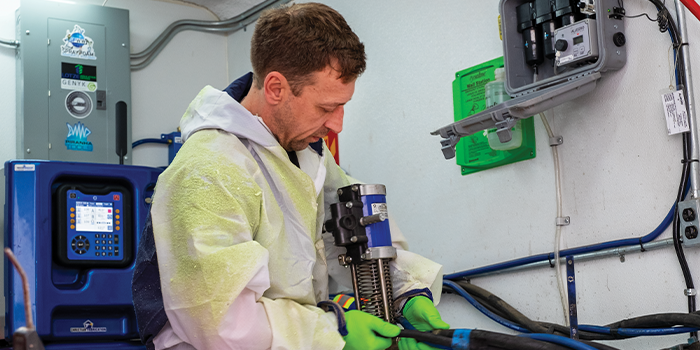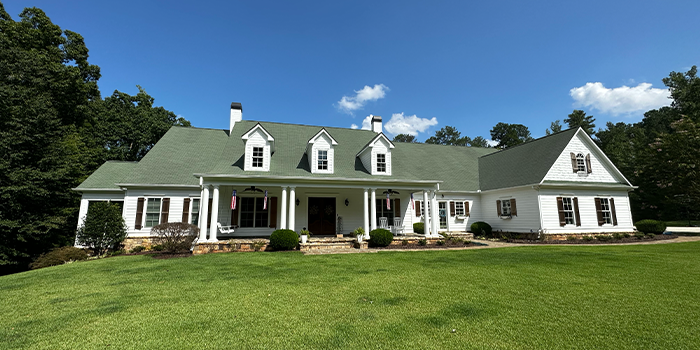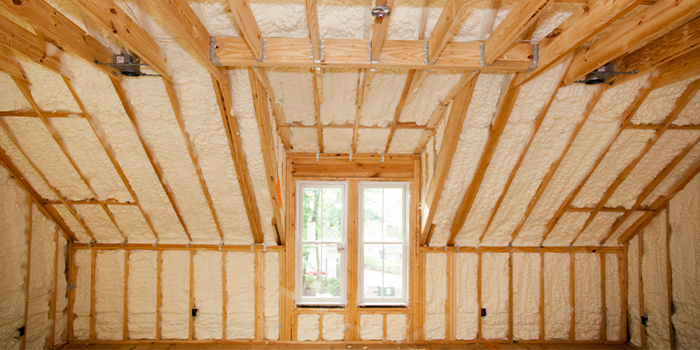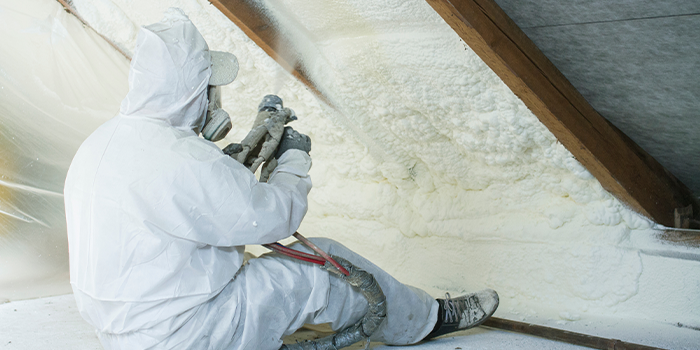Size Matters
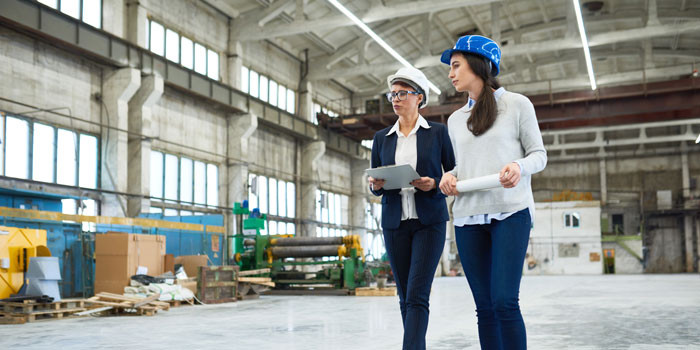

Spring 2020 – Spray Foam Magazine – Equipment and safety wear companies, manufacturers and construction businesses are slowly waking up to realize a growing number of women are entering the world of construction. Providing size options for women’s safety gear is a must to ensure lives are not put at risk due to ill-fitting gear. The old-fashioned mindset of ‘one size fits all’ for safety wear and equipment needs to change and standards should be adopted to suit.
Can the industry as a whole ignore the workforce of women whose input and manual labor may just save an industry, and what are safety gear manufacturers doing to cater for this demographic? In addition to the safety aspect and the gear having the proper fit, women should have confidence, feel comfortable and look professional.
Personal Protective Equipment (PPE) covers both clothing and equipment designed for workers. What if this clothing and equipment does not fit correctly? Currently women contractors are frequently presented with safety wear and gear which is either too big or not the right shape for them. The risk of boots being too large for the employee may result in tripping or a nasty fall. Oversized gloves or loose clothing has the danger of falling off or getting caught in machinery.
A study from 1999 (the HASWIC report to OSHA) identifies some specific concerns and complaints from women in the building trade who were interviewed for the study. Additional complaints include: loose ill-fitting hats, oversized safety harnesses and welding boots so loose, it required additional socks for a proper fit.
Manufacturers are required to produce PPE to meet ANSI/ASTM standards, but there are not any specific clauses for women, e.g. Z87 – standard for safety eyewear, or Z359 – consensus standard for fall protection. OSHA is far behind in changing their standards, for example clause 1926.28, Construction Foot Protection dates back to references from 1967.
In November of 2019, there was a noteworthy step in the right direction with Autodesk and Associated General Contractors of America (ACG) working together to create custom-fitting safety harnesses for women. It has also taken the hard work and determination of people like Jane Henry, founder of SeeHerWork, which caters to women who require products like: smaller gloves, protective undergarments and correctly sized eye and ear protection, respirators, footwear, backpacks, and fire-resistant clothing. Henry experienced first-hand, the potential dangers of an ill-fitting unisex glove, when one flew off her hand leaving her hand wedged between a board and a dumpster.
Equipment has also proved an issue with tool weight, or handle size designed for the size and strength of a man. The average length of a woman’s hand is 0.8 inches shorter than that of man. Many of the grips on tools are also too thick, causing extensive pressure on the palm and potential injury.
Following the Occupational Safety and Health Act of 1970, employers are responsible for providing a safe and healthy workplace for their employees. OSHA’s job is to ensure the principles are enforced for America’s men and women by providing advice, assistance and education options.
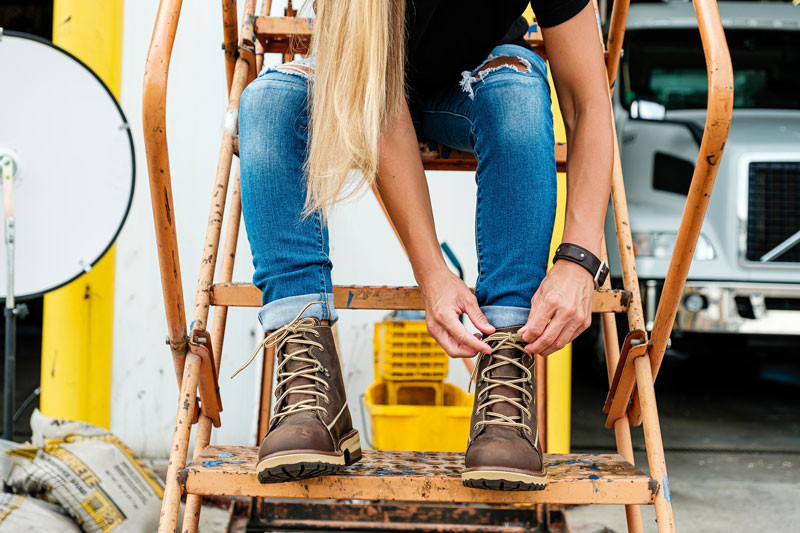
Determined groups such as SeeHerWork have taken large strides in the past couple of years to produce products catered to women, such as smaller gloves, protective undergarments, and correctly-sized eye and ear protection, respirtators, footwear, backpacks, and fire-resistant clothing.
More women are entering into manual construction roles which involve physical work.Women’s PPE, protective clothing and workwear needs to fit the job at hand. These requirements will also be a symbol of supporting and welcoming women into what was once a male dominated industry.
In 2017, OSHA and the National Association of Women in Construction (NAWIC) renewed their alliance to protect the safety and health of female construction workers. The five-year alliance focuses on potential risks including personal protective equipment selection, sanitation, and workplace intimidation and violence and seeks to provide better availability of workplace safety, health tools and information.
NAWIC was launched in 1955 by 16 women working in construction to create a support network for other women in the industry. A national foundation with chapters all over the U.S., including Guam, NAWIC provides educational and professional development opportunities like networking, certification programs, webinars, mentorship and access to industry leaders to more than 4,000 women working in construction today. NAWIC chapters meet monthly to discuss industry updates, opportunities and other valuable information for members. At a higher level, chapters are grouped by regions, which each have both a Fall Conference and Spring Forum annually. At a national level, there is also an annual conference held in August, where members and industry leaders gather to exchange information and ideas pertinent to current trends in the industry. NAWIC has five staff members at the national office, and the organization leadership consists of a National Board of Directors, regional and chapter leadership, and committee leaders. Just like the founding members, these women are members who hold full time jobs in the industry while volunteering at NAWIC.
Kathi Dobson is the Safety Director at Alberici Constructors, Inc. and the Alliance Liaison for NAWIC. She has a wealth of knowledge on safety for women in construction. Spray Foam Magazine asked Kathi about the number of women entering the construction industry. “The number of women in construction has been steady at about 10 percent overall, three percent of which work on projects in the field (tradeswomen, project management teams, supervisors). This number is expected to grow as more women are entering the building trade through apprenticeship, construction management, engineering and architectural programs.”
Dobson went on to add, “The situation is slowly improving, but there are still problems finding PPE which is sized to body shapes, regardless of gender. The WISE (women in safety excellence), a common interest group of the ASSP, is developing a technical report, which eventually will be registered with the American National Standards Institute (ANSI). The report is intended for use by women (as well as manufacturers, employers, trades unions) in occupational safety and health settings. This guidance will address fit issues, selection, assessment, and use of such equipment. If used as intended, application of the guidance in the technical report will assist with problems women find with obtaining PPE that works.”
Occupational safety and health hazards, risks, and exposures related to PPE issues should be identified, avoided, reduced, and/or eliminated. ASSP also recognizes issues related to PPE is not exclusive to women, but rather to anyone whose body shape/height exceeds or does not meet the 95th percentile that most PPE is manufactured for.”
Through the sharing of this information, more manufacturers are looking to women in the industry for guidance on how their PPE fits, functions and is comfortable enough to wear day in and day out for eight to 10 hours or more each day. The Advisory Committee on Construction Safety & Health (ACCSH - an OSHA consensus committee) have recommended changes to the construction standard (1926.28) to address employers provide PPE that fits (Currently not a construction requirement per OSHA).
There is currently no specific standard that addresses only instruction for women and with no specifications or incentives for employers to provide women with appropriate equipment and safety wear. Until this changes, will manufacturers take the initiative and help protect women in the construction industry? Only time will tell.
Disqus website name not provided.




